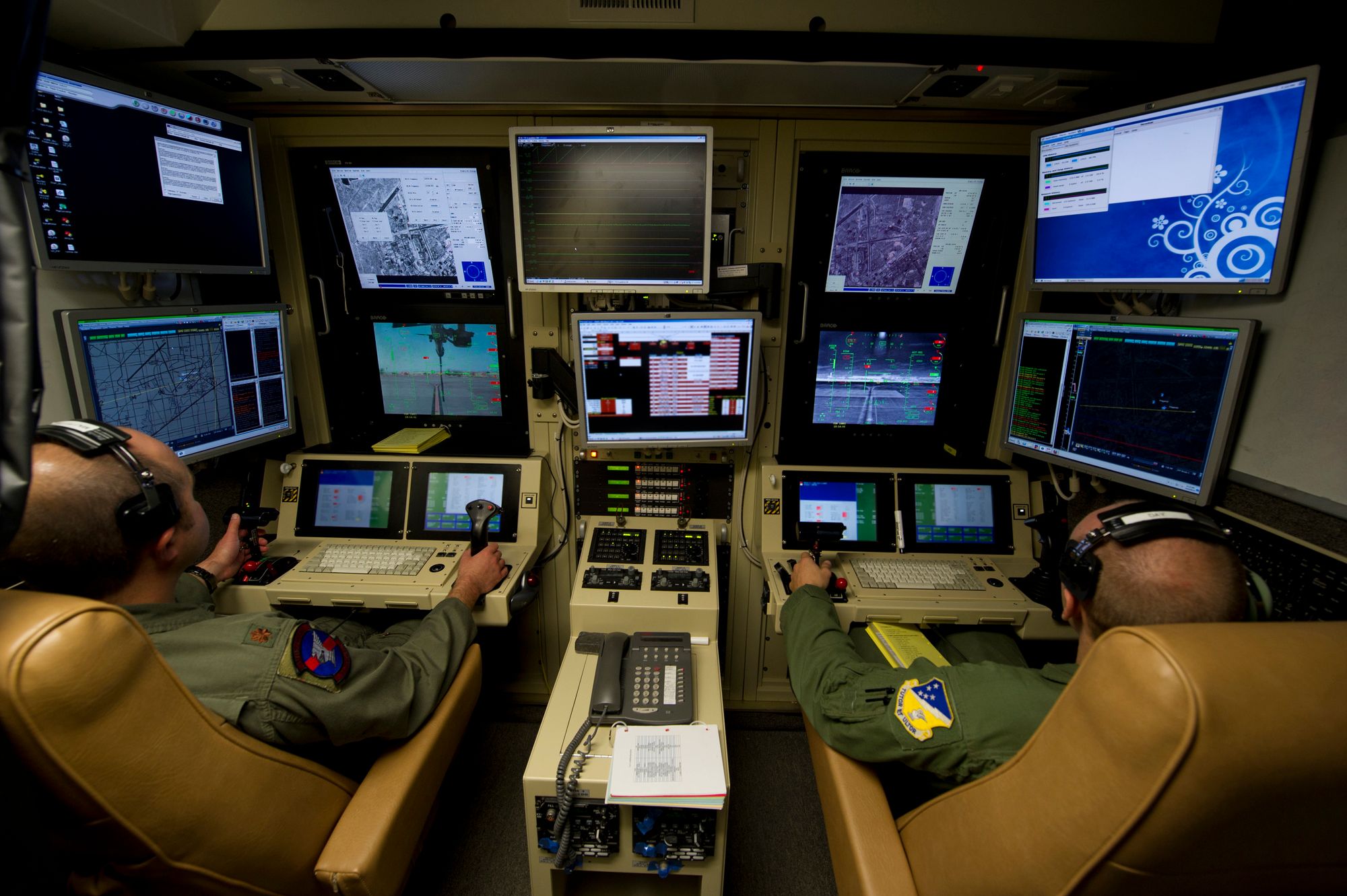Eremitic Warfare
Plato's Allegory of the Cave and the Drone Pilot

Screens are increasingly used in warfare to somehow shield combatants from physical risk, particularly in the realms of drone and cyber warfare. However, much like in Plato's Allegory of the Cave, reality has a habit of breaking though the shadows.
Recently, I was struck by the incredible stylistic similarity between the passage below from Plato's Cave and the introduction to a magazine article about the working conditions of a drone pilot who'd had enough. There seems to be something archetypal working through both of these descriptions involving projections and eremitic spaces. I quote both sources at length:
'Imagine human beings living in an underground, cave-like dwelling, with an entrance a long way up, which is both open to the light and as wide as the cave itself. They've been there since childhood, fixed in the same place, with their necks and legs fettered, able to see only in front of them, because their bonds prevent them from turning their heads around. Light is provided by a fire burning far above and behind them. Also behind them, but on higher ground, there's a path stretching between them and the fire. Imagine that along this path a low wall has been built, like the screen in front of puppeteers above which they show their puppets.
Then also imagine that there are people along the wall, carrying all kinds of artifacts that project above it—statues of people and other animals, made out of stone, wood, and every material. And, as you'd expect, some of the carriers are talking, and some are silent.'
Plato's Allegory of the Cave, c. 375 BC
---
'From the darkness of a box in the Nevada desert, he watched as three men trudged down a dirt road in Afghanistan. The box was kept cold—precisely sixty-eight degrees—and the only light inside came from the glow of monitors. The air smelled spectrally of stale sweat and cigarette smoke. On his console, the image showed the midwinter landscape of eastern Afghanistan’s Kunar Province—a palette of browns and grays, fields cut to stubble, dark forests climbing the rocky foothills of the Hindu Kush. He zoomed the camera in on the suspected insurgents, each dressed in traditional shalwar kameez, long shirts and baggy pants. He knew nothing else about them: not their names, not their thoughts, not the thousand mundane and profound details of their lives.
He was told that they were carrying rifles on their shoulders, but for all he knew, they were shepherd’s staffs. Still, the directive from somewhere above, a mysterious chain of command that led straight to his headset, was clear: confirmed weapons. He switched from the visible spectrum—the muted grays and browns of “day-TV”—to the sharp contrast of infrared, and the insurgents’ heat signatures stood out ghostly white against the cool black earth. A safety observer loomed behind him to make sure the “weapon release” was by the book. A long verbal checklist, his targeting laser locked on the two men walking in front. A countdown—three…two…one…—then the flat delivery of the phrase “missile off the rail.” Seventy-five hundred miles away, a Hellfire flared to life, detached from its mount, and reached supersonic speed in seconds.
It was quiet in the dark, cold box in the desert, except for the low hum of machines.'
Confessions of a Drone Warrior, 2013
